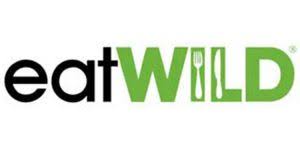You’ve decided that buying meat by the quarter, half, or whole animal is the way to go; it’s a more traditional way of eating and a great option for saving time and money. But now what? Where do you find a local farmer selling meat this way?
People living in more rural areas likely have a general idea of how many farms exist nearby, but many big-city dwellers may have the impression that finding a local farmer to buy from will be difficult. In fact, the opposite is usually true: there are often numerous small-scale farms within a 50-mile radius of large metropolitan areas, simply because the high concentration of people there makes for a large and convenient customer base.
No matter where you live, these resources will help you find the farmers and the food you’re looking for.
1) Eatwild
 Founded by Jo Robinson in 2001, Eatwild has grown to become the most comprehensive online source for information on the many benefits of eating local, pasture-raised meat and animal products. Their site includes an extensive state-by-state listing of small-scale meat, dairy, and egg producers, with descriptions of each farm’s offerings, as well as website and contact information. Although the site doesn’t catalog all available options (likely because farmers must apply and pay an annual listing fee) and some listings may be out of date or for farms that do not sell in bulk, this is still the best places to begin your search.
Founded by Jo Robinson in 2001, Eatwild has grown to become the most comprehensive online source for information on the many benefits of eating local, pasture-raised meat and animal products. Their site includes an extensive state-by-state listing of small-scale meat, dairy, and egg producers, with descriptions of each farm’s offerings, as well as website and contact information. Although the site doesn’t catalog all available options (likely because farmers must apply and pay an annual listing fee) and some listings may be out of date or for farms that do not sell in bulk, this is still the best places to begin your search.
Eatwild also offers an extensive collection of articles and informational resources on the benefits of local and ethically raised food, food safety, and agricultural news and issues.
2) Farmers markets
Chances are good there’s a farmers market or two near you, at least during the warmer months. Farmers markets are a great place to look for farmers selling meat in bulk. In some cases, farmers offering meat by the quarter, half, or whole animal will advertise that option at their booth (and you may even be able to pick up your purchase there). Even if it looks like a farmer only sells individual cuts of meat, it’s always a good idea to ask if they sell in bulk direct to customers — most either already do or are willing to discuss making special arrangements.
One big bonus of buying from a farmer who sells at a farmers market? You have the opportunity to try individual retail cuts of meat before committing to a large purchase.
Even if your local farmers market doesn’t include any meat providers, it never hurts to ask around. Farmers are a tight-knit group, and the guy selling peaches or fresh-cut flowers may very well know someone who raises cattle, hogs, chickens, etc.
You don’t even necessarily need to visit the market in person to find what you’re looking for. Many farmers markets have a website that provides a list of vendors, complete with email, website, or social media links. You can do your detective work from the comfort of your own home (although you’ll miss out on all the delicious samples…).
 If you’re not sure what farmers markets are in your area, LocalHarvest is an excellent resource. Their mission is to “connect people looking for good food with the farmers who produce it.” In addition to a listing of nearby farmers markets, the site also includes resources for finding community supported agriculture (CSA) programs, u-pick produce, sustainable restaurants, and grocery stores offering locally grown food. You can also use LocalHarvest to search directly for nearby farms, although the search function doesn’t offer many filtering options. The USDA also maintains the National Farmers Market Directory, with extensive information for each market.
If you’re not sure what farmers markets are in your area, LocalHarvest is an excellent resource. Their mission is to “connect people looking for good food with the farmers who produce it.” In addition to a listing of nearby farmers markets, the site also includes resources for finding community supported agriculture (CSA) programs, u-pick produce, sustainable restaurants, and grocery stores offering locally grown food. You can also use LocalHarvest to search directly for nearby farms, although the search function doesn’t offer many filtering options. The USDA also maintains the National Farmers Market Directory, with extensive information for each market.
3) Local butcher shops, grocery stores, and restaurants
 If you’ve tried Eatwild and your local farmers market and still can’t find any farmers selling meat by the animal, consider checking out retail establishments that sell locally raised meat. These may include butcher shops, meat markets, the meat counters of independent or specialty grocery stores and co-ops, and restaurants offering “farm to table” meals. If it’s not immediately obvious where their meat comes from, ask which farms they work with. Butchers in particular may be able to put you in direct contact with farmers selling in bulk. And, as with farmers markets, there’s the chance to “try before you buy” (or, more accurately, “buy a little before you buy a lot”).
If you’ve tried Eatwild and your local farmers market and still can’t find any farmers selling meat by the animal, consider checking out retail establishments that sell locally raised meat. These may include butcher shops, meat markets, the meat counters of independent or specialty grocery stores and co-ops, and restaurants offering “farm to table” meals. If it’s not immediately obvious where their meat comes from, ask which farms they work with. Butchers in particular may be able to put you in direct contact with farmers selling in bulk. And, as with farmers markets, there’s the chance to “try before you buy” (or, more accurately, “buy a little before you buy a lot”).
In addition to some basic Googling (“butcher shops near me,” “farm to table restaurants near me,” etc.), LocalHarvest allows you to search for restaurants, grocery stores, co-ops, and meat processors in your area.
The online option
If all else fails and you really can’t find a farmer near you selling the meat you’re looking for by the quarter, half, or whole animal, ordering online is an option. Eatwild maintains a list of farmers willing to ship within the contiguous United States. While you won’t be buying local to you, you’ll still be supporting a small farm and reaping the health benefits of grass-fed and pasture-raised meat.
 Buying a half hog or a quarter beef online will still save you time compared to weekly trips to the grocery store, but it may not save you money. Packing and shipping meat — especially a lot of it — in a way that ensures it arrives still frozen is very expensive. In some cases, customers may pay for shipping directly, while in others shipping may be “free” (worked into the price of the meat). Either way, the per-pound cost may work out to be more than you’re willing to spend. It can also be harder to vet the quality of a farm and the meat it produces from afar. Be sure to check for reviews of any farm you’re considering ordering from online.
Buying a half hog or a quarter beef online will still save you time compared to weekly trips to the grocery store, but it may not save you money. Packing and shipping meat — especially a lot of it — in a way that ensures it arrives still frozen is very expensive. In some cases, customers may pay for shipping directly, while in others shipping may be “free” (worked into the price of the meat). Either way, the per-pound cost may work out to be more than you’re willing to spend. It can also be harder to vet the quality of a farm and the meat it produces from afar. Be sure to check for reviews of any farm you’re considering ordering from online.
Contrary to what you might have expected, you’ll most likely end up with a number of farmers to choose between. To learn more about how to choose the one that’s the best fit for you, check out Chapter 5 of There’s a Cow in My Freezer.
